Gluten Free Baguette
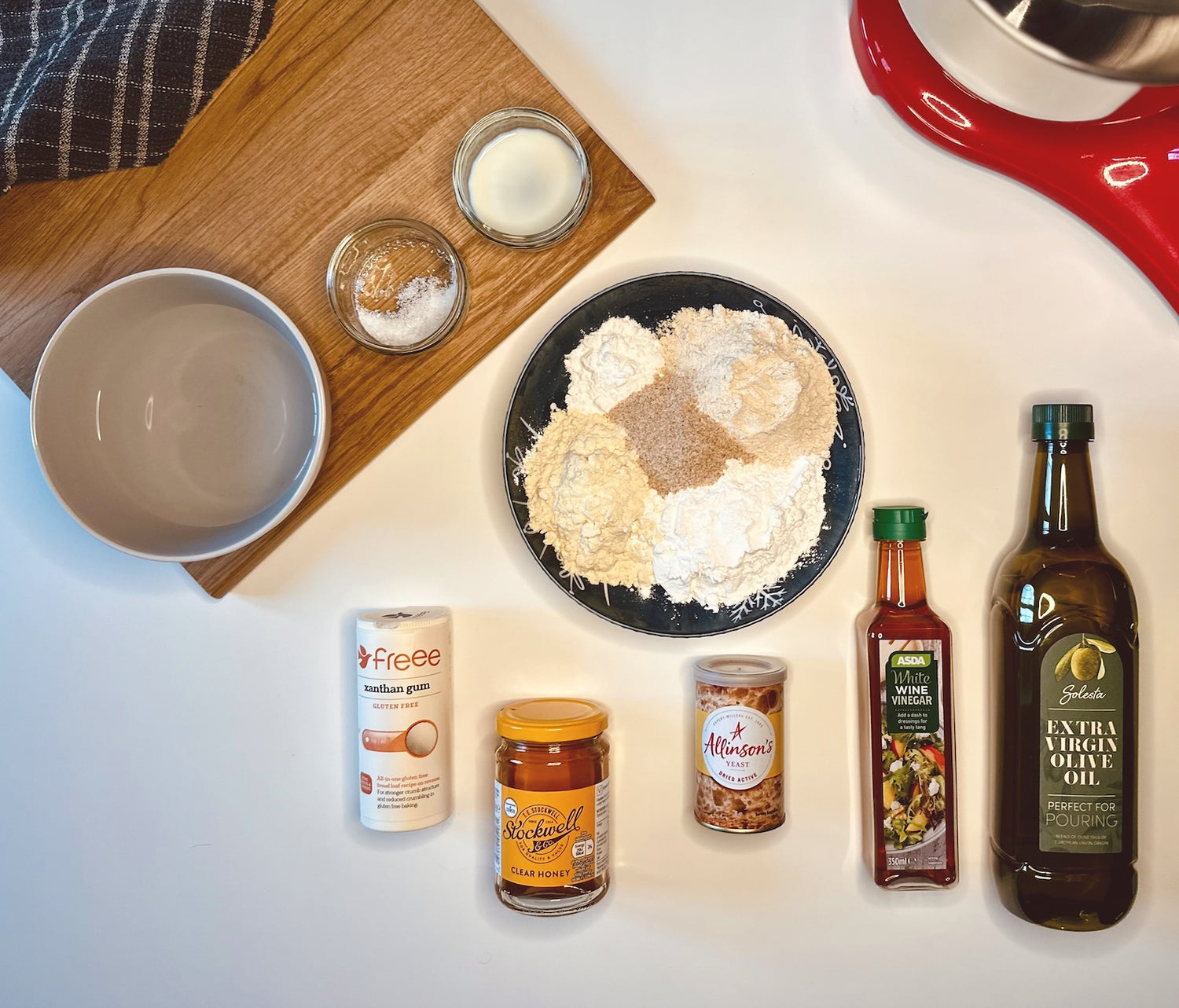
Ingredients
100g Tapioca Starch
70g Millet Flour
75g Sorghum Flour
20g Potato Starch
15g Ground Psyllium Husk
1 Teaspoon Xanthan Gum
260ml / g Warm Water
1 1/2 Teaspoon Dried Active Yeast
2 Teaspoon's Honey
15ml / g Milk
5g Salt
1 Teaspoon White Wine Vinegar
25g Extra Virgin Olive Oil
This Gluten Free Baguette recipe is another one my wife's favourites. Since being diagnosed Coeliac, a proper crusty roll had seemed impossible to come by, until this recipe came in to our lives. You will be shocked that this is Gluten Free, and the Crust King Baking Steel delivers a proper crunchy crust whilst the interior remains soft and fluffy.
If you're really adventurous, you can use these baguettes to make your own homemade Gluten Free Garlic Bread to accompany your pizza.
This recipe yields 2 small / medium baguettes. The recipe can be scaled for different quantities, or if you want to make larger baguettes.
Instructions
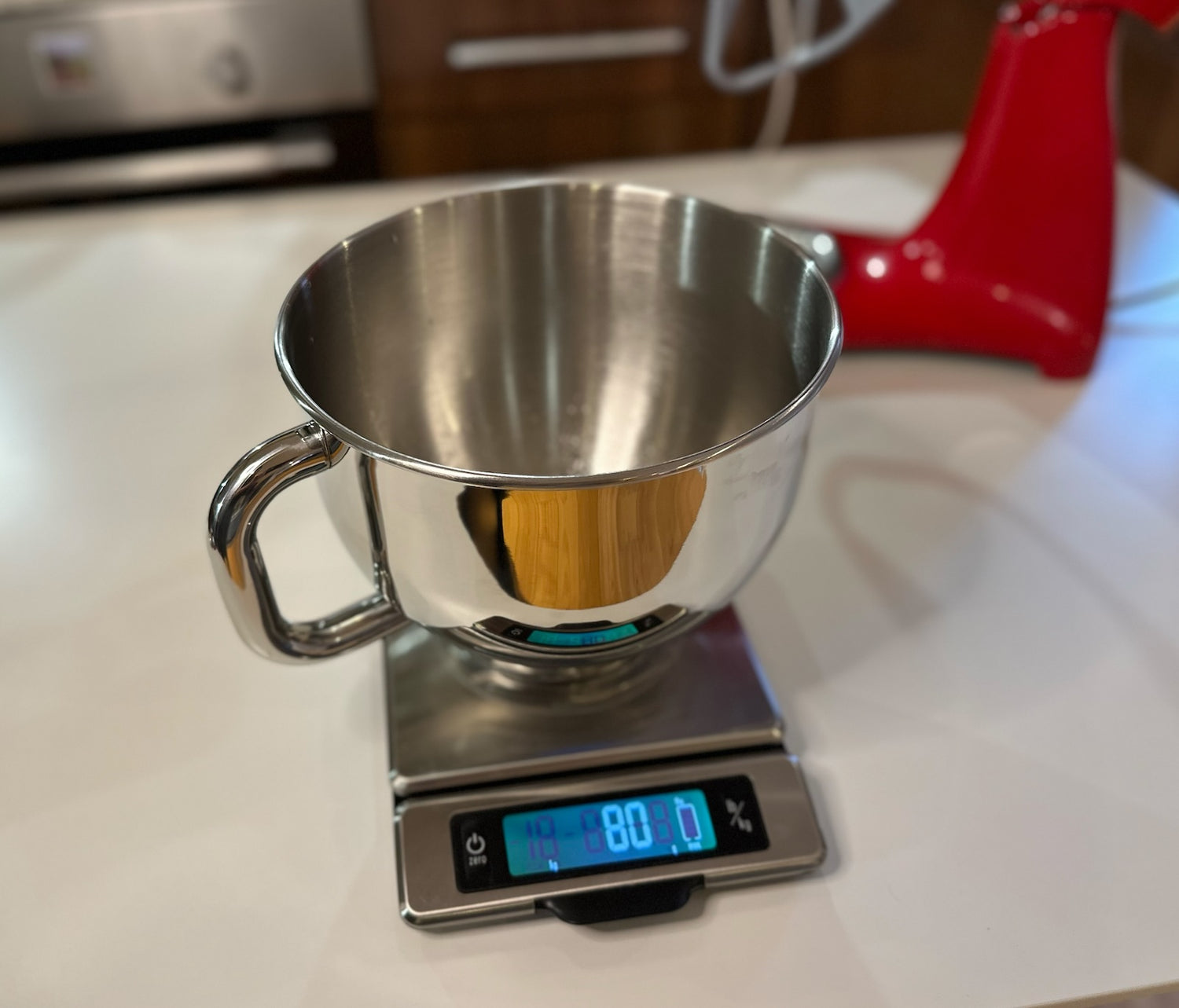
1. Add the Warm Water to a large mixing bowl - or the bowl of a stand mixer if you have one. Make sure to do so accurately, either using a measuring jug, or better yet a set of digital scales (did you know that 1 gram of water is the same as 1ml?).
It is important that the water is still comfortable to touch, any hotter and you risk killing the yeast once it is added.

2. Add the Honey and mix briefly with a spoon to ensure that it is dissolved in the water before adding the Yeast.

3. Add the Yeast and mix it into the water. It doesn't have to fully dissolve, and it's okay if a few strands get stuck to the side of the bowl, as long as the majority of it is incorporated.
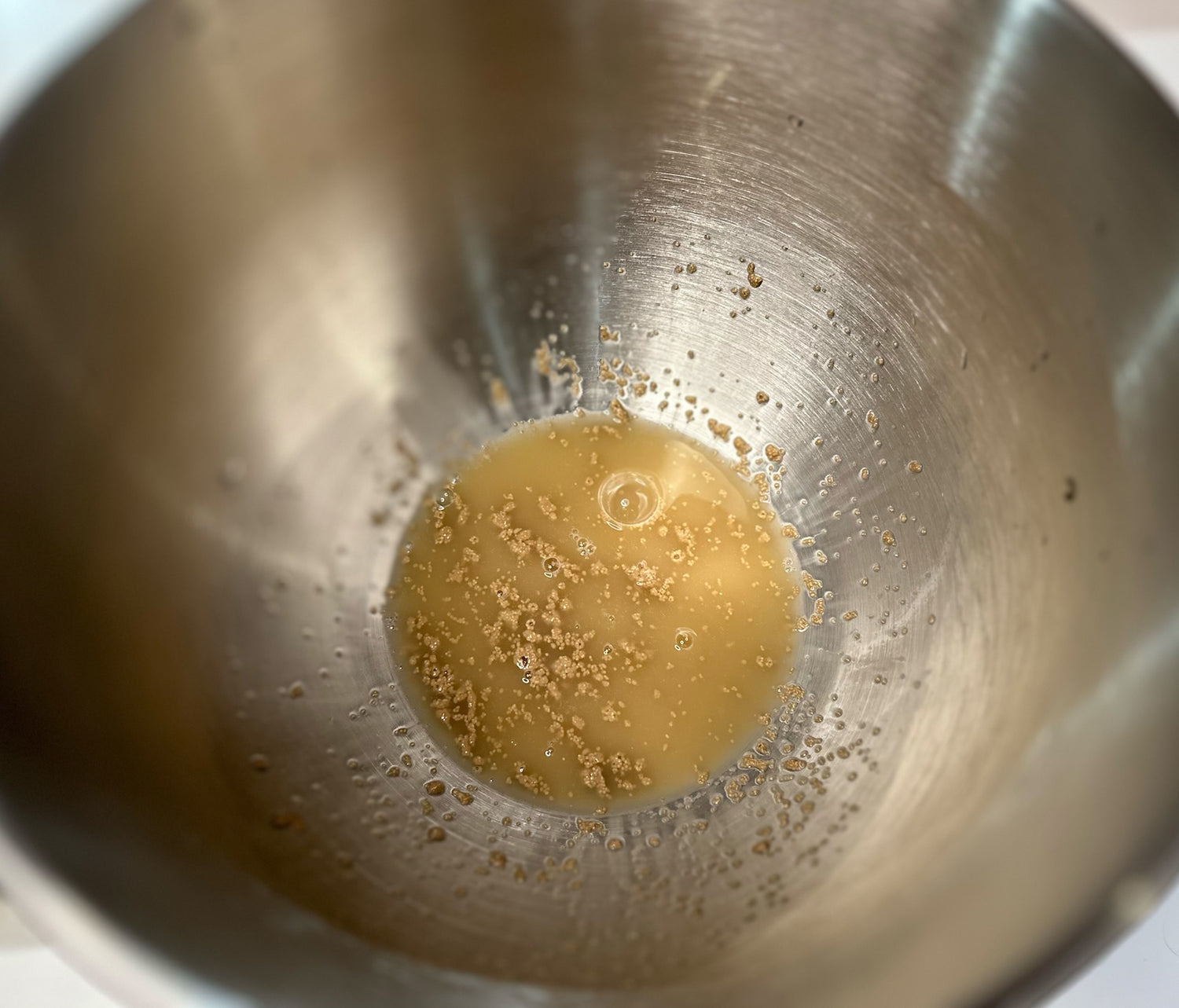
4. The mixture should look like this immediately after mixing. Leave this to stand for 10 - 15 minutes.

5. After this time, the Yeast should have started to foam and appear pillowy - in my example you can see that it formed a large circle on the water's surface. This is a process known as blooming, where the Yeast is activated and starts to eat the sugar that's in the Honey. This is how you know that your Yeast is alive, and that the dough is going to be a success. If the Yeast doesn't bloom, then you'll have to buy more; using dead yeast will not work, and your crust won't rise.
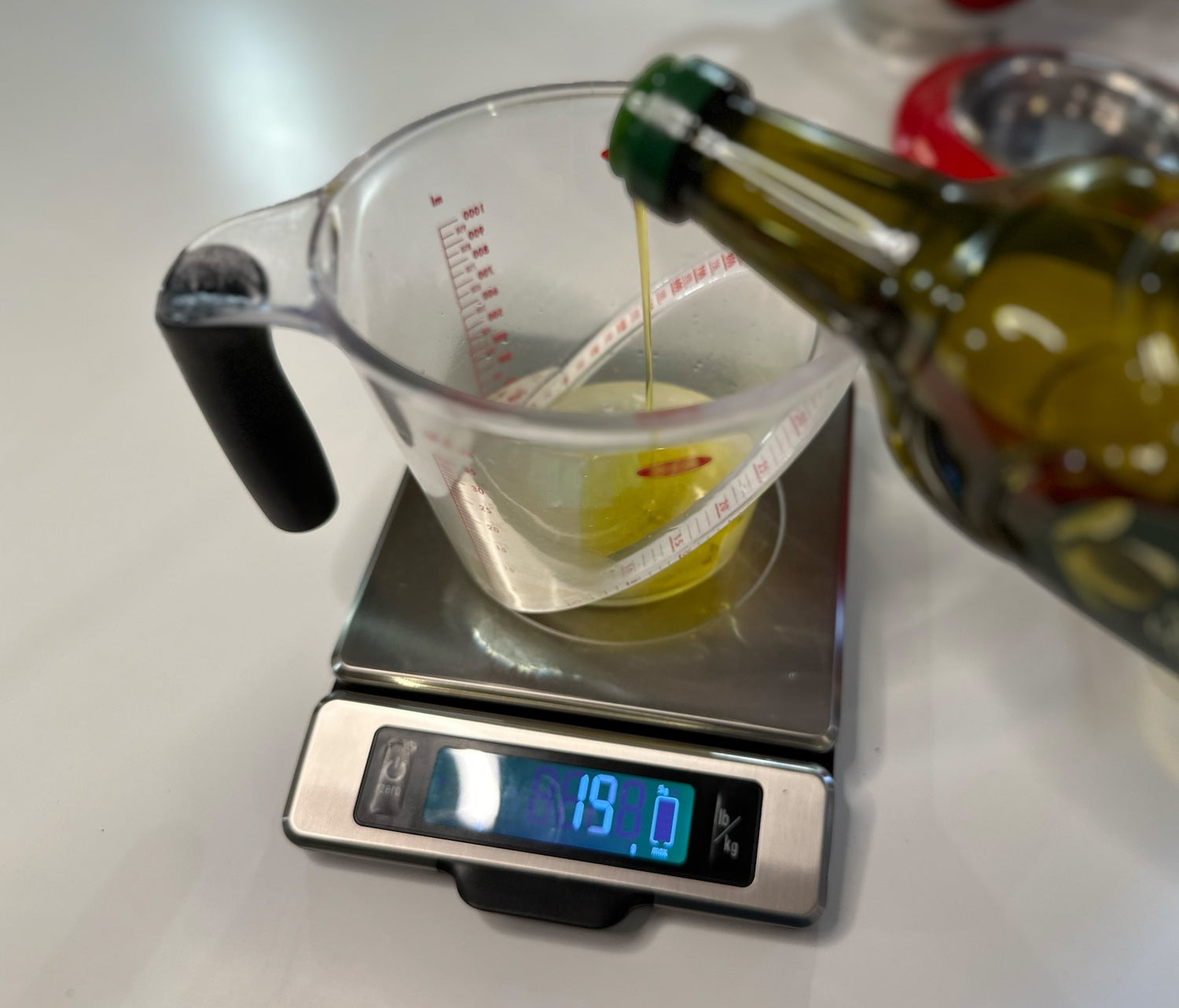
6. Combine the other liquids; the White Wine Vinegar, Extra Virgin Olive Oil, Milk and remaining 180ml / g of Warm Water in a jug, once again measuring for accuracy.

7. Then all at once, pour these into the Yeast mixture.
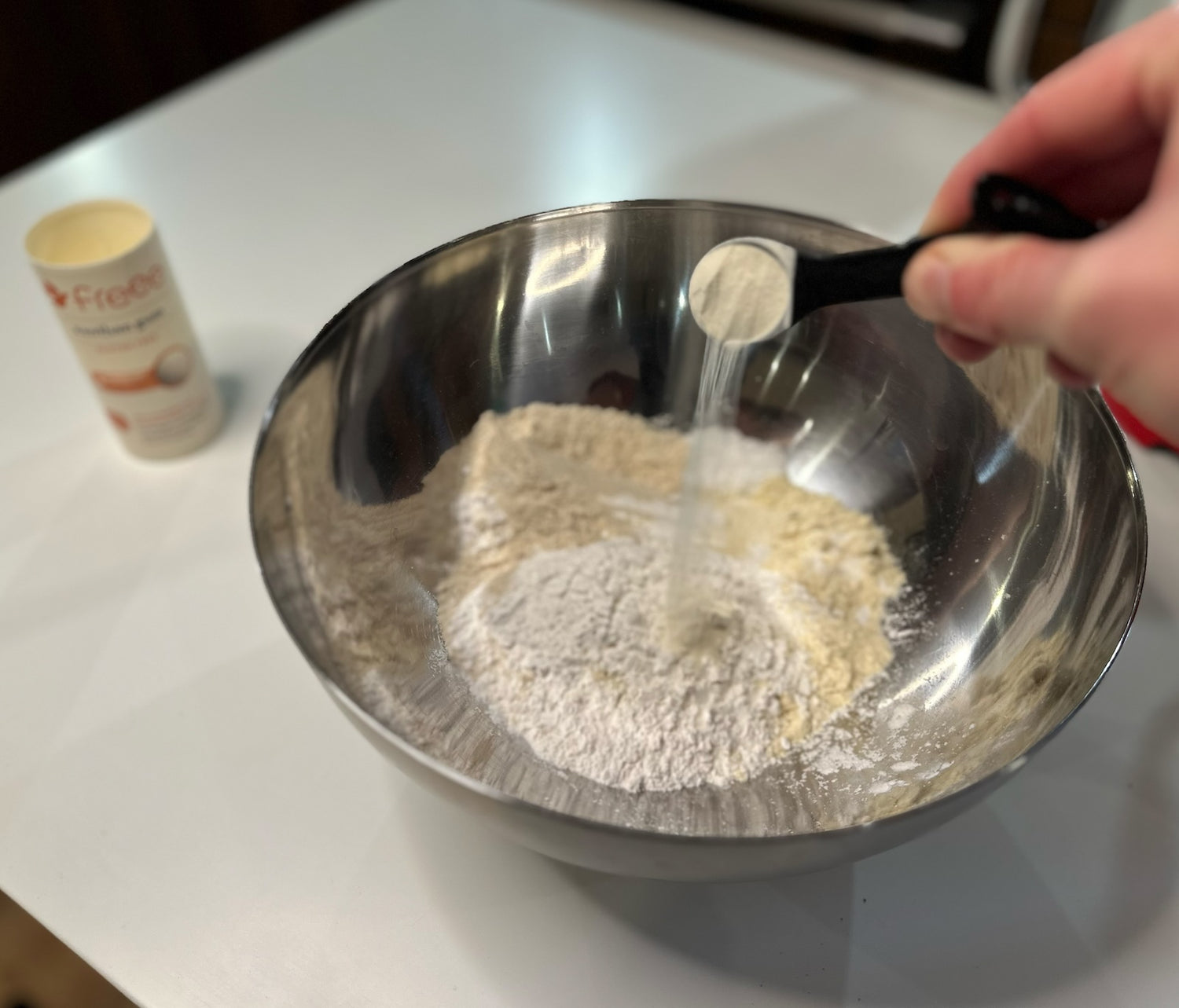
8. In a separate bowl, mix together all of the remaining dry ingredients; the Tapioca Starch, Millet Flour, Sorghum Flour, Potato Starch, Ground Psyllium Husk, Xanthan Gum and Salt.
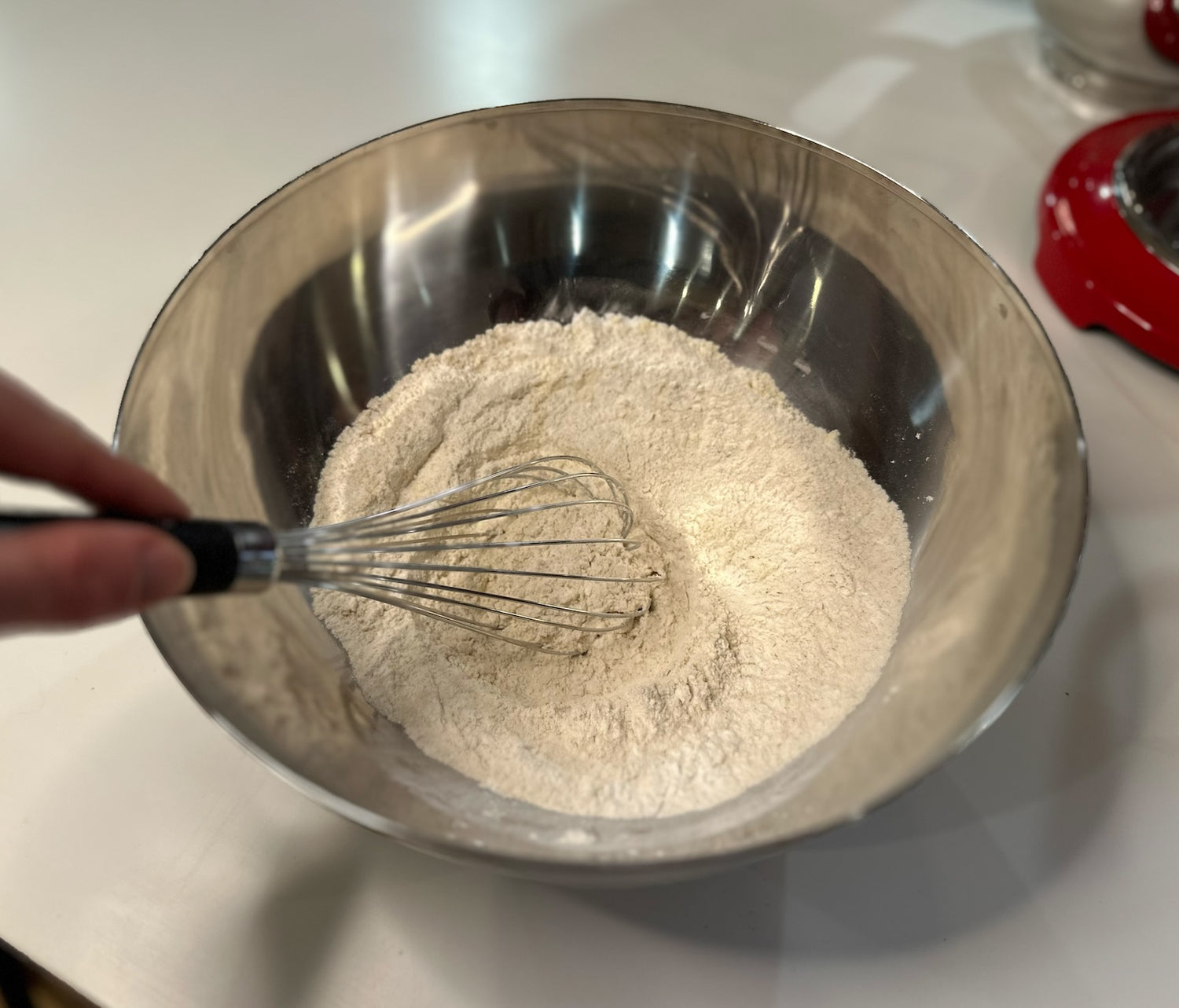
9. Mix thoroughly with a hand whisk to ensure that the ingredients are evenly distributed.
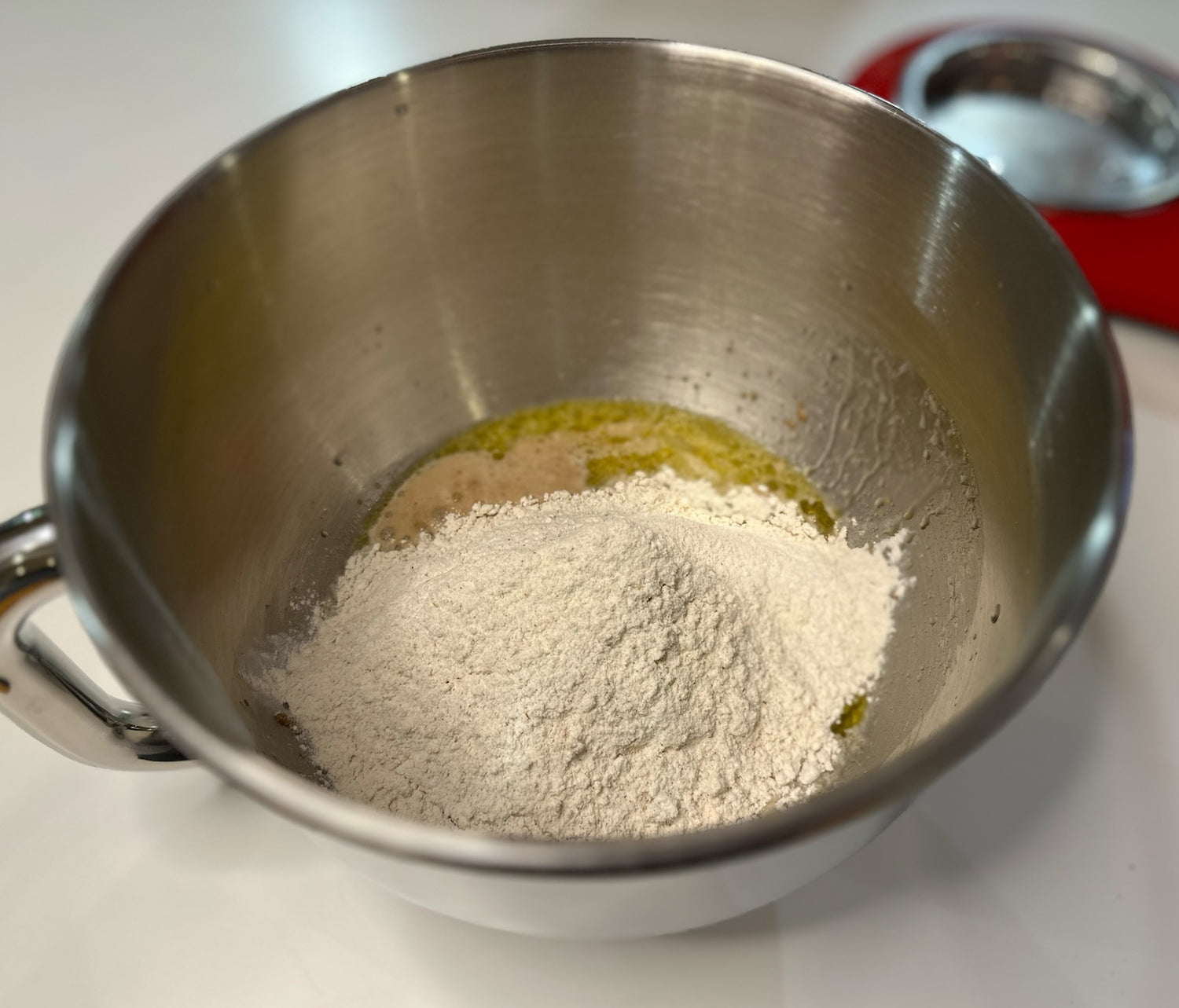
10. Add the dry ingredients to the Yeast mixture. If doing this by hand you can begin by using a wooden spoon or something similar, particularly whilst the dough is very sticky.
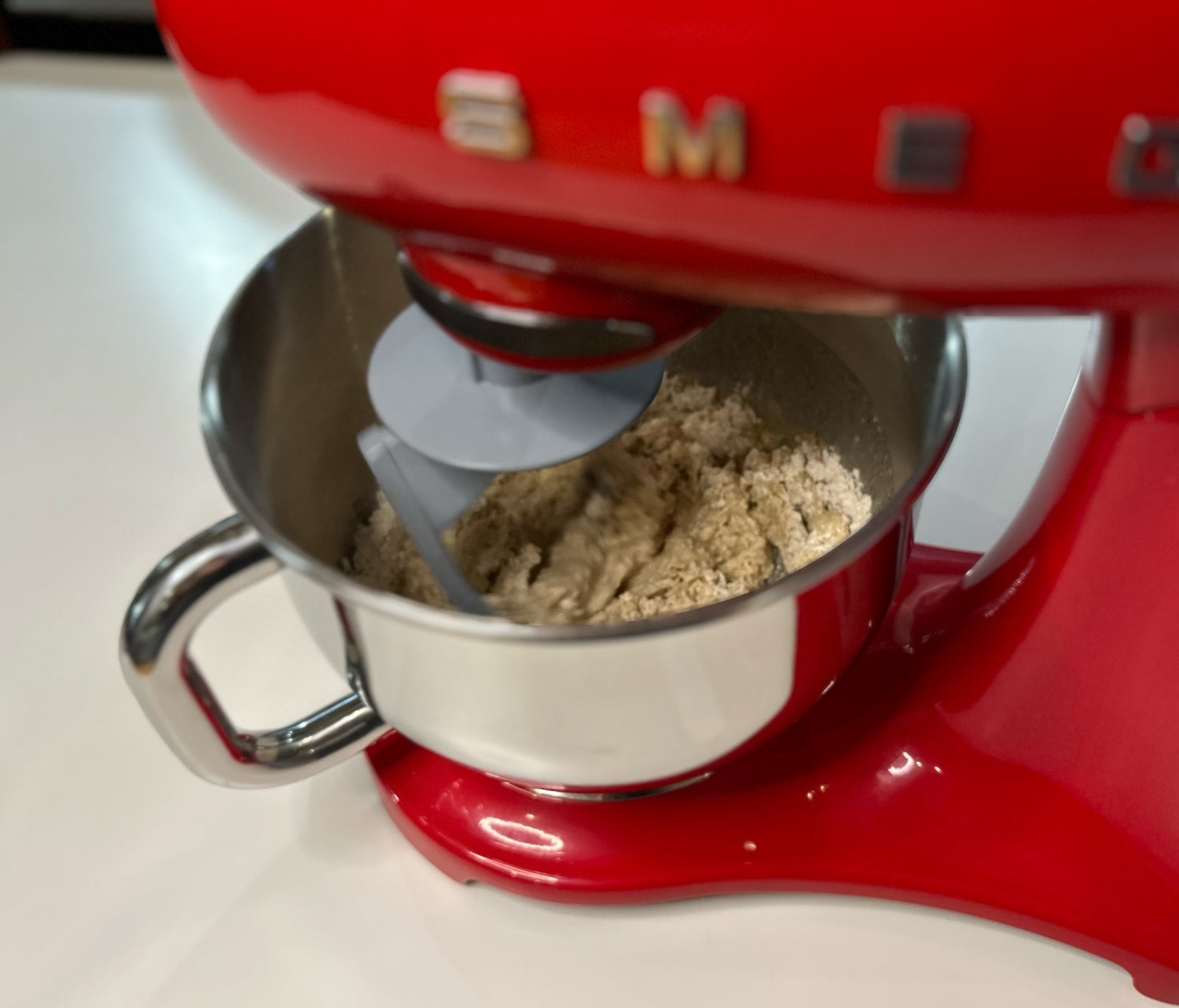
11. If using a stand mixer, use the dough hook attachment and begin to mix on low speed for 2 and a half minutes. Stop to scrape down the sides of the bowl before continuing to mix for another 2 and a half minutes.
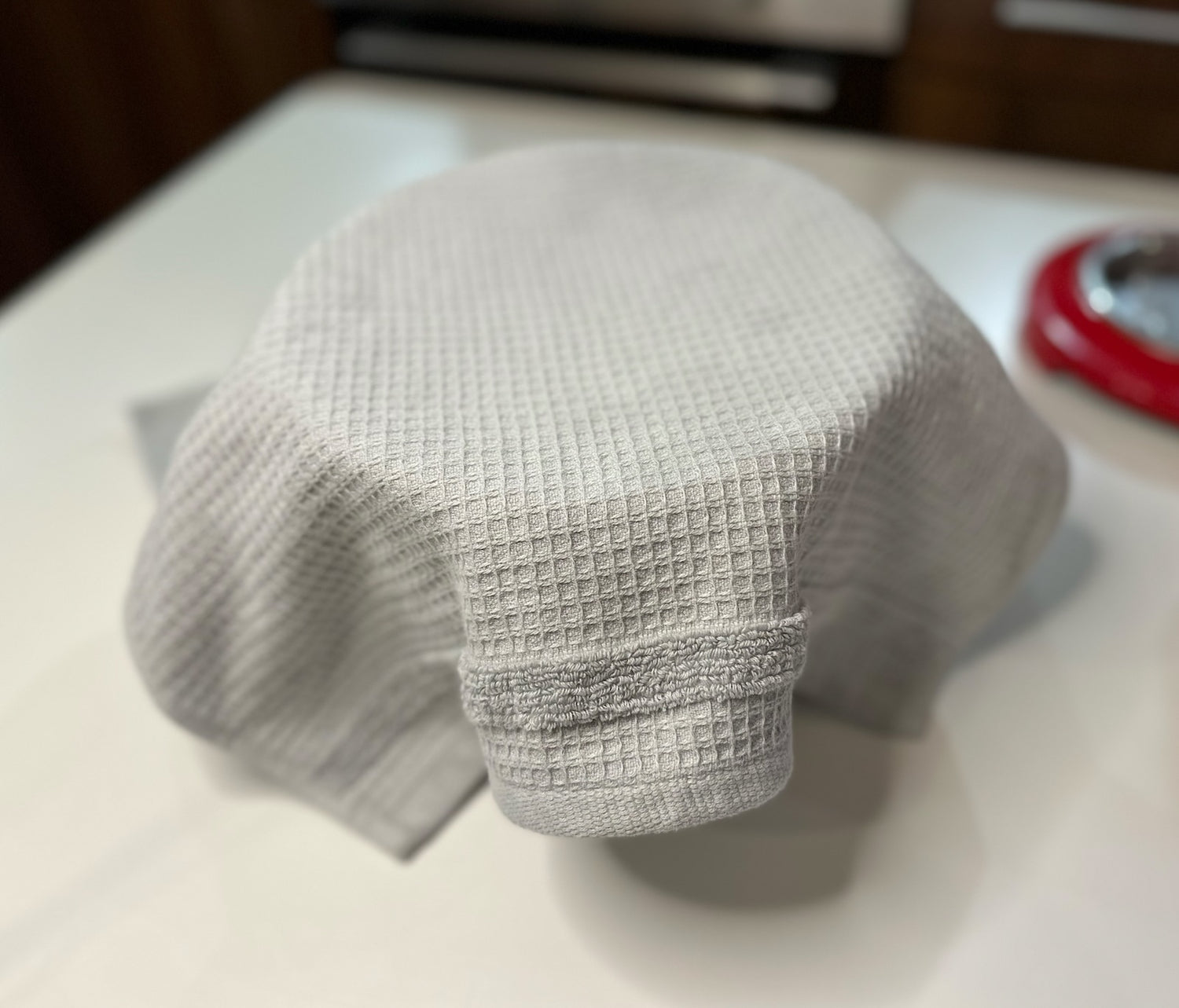
12. Take the dough in your hands and form it into one large ball - if you coat your hands in a bit of Oil first, this helps prevent it from sticking to you.
Once your large ball has been formed, place it back in the mixing bowl and then cover it with a tea towel.
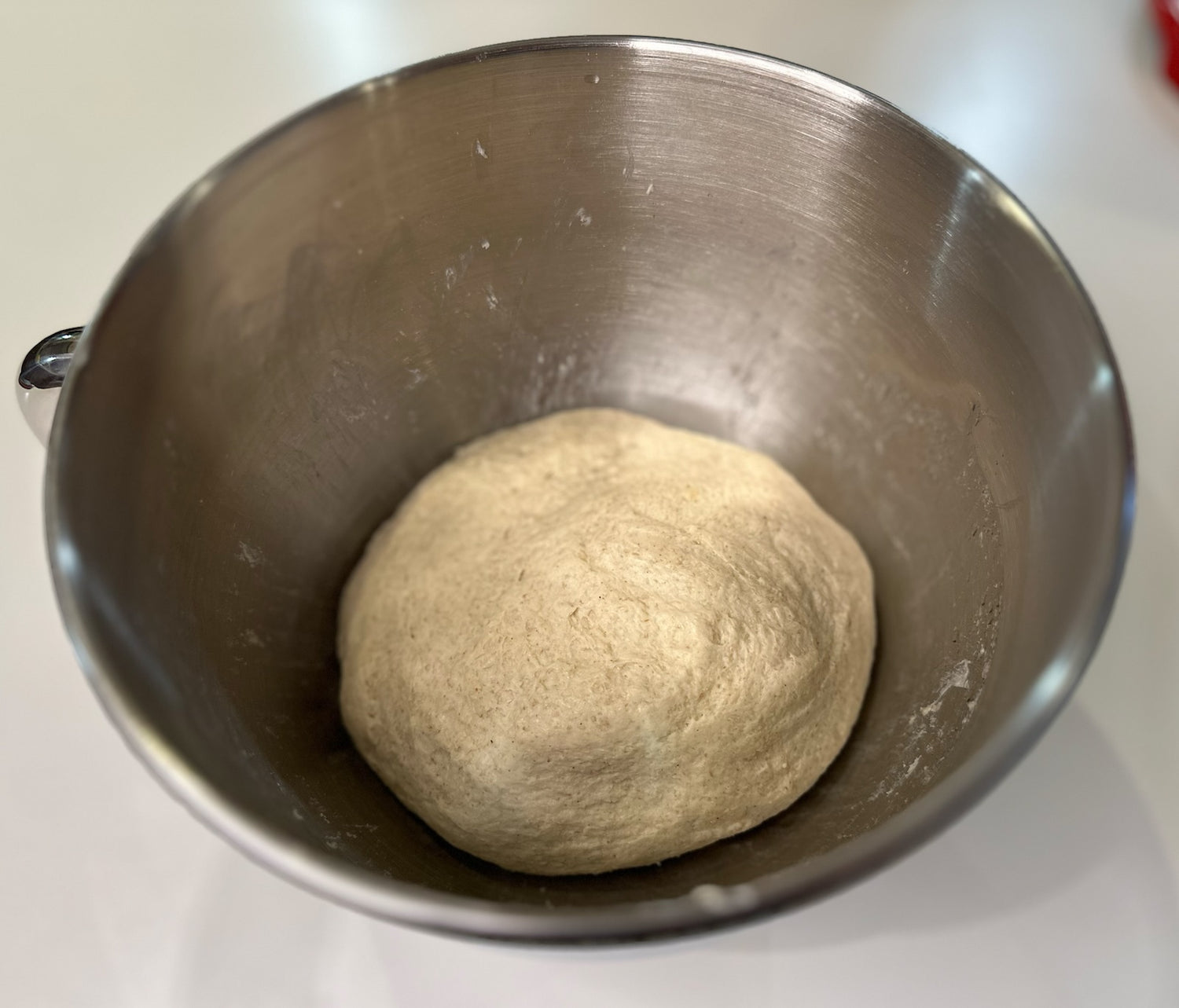
13. Leave it out on your work surface for 45 minutes to rise - by time you come back, it should have noticeably increased in volume.
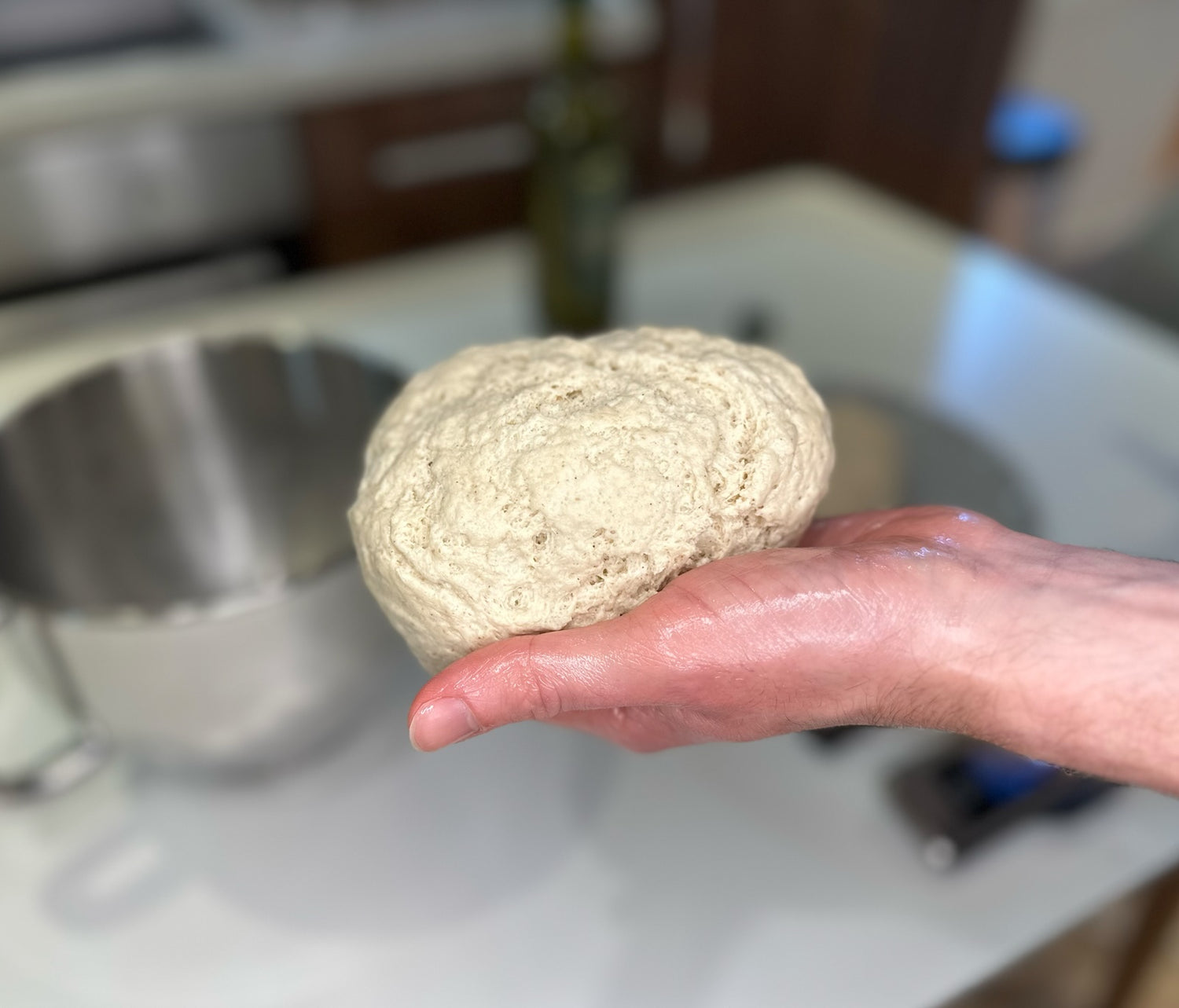
14. Remove the dough from the bowl, again using oiled hands, and separate it into two evenly sized pieces. Roll these into balls, tucking the open ends of the dough underneath so that the outer surface appears smooth and free of tears.
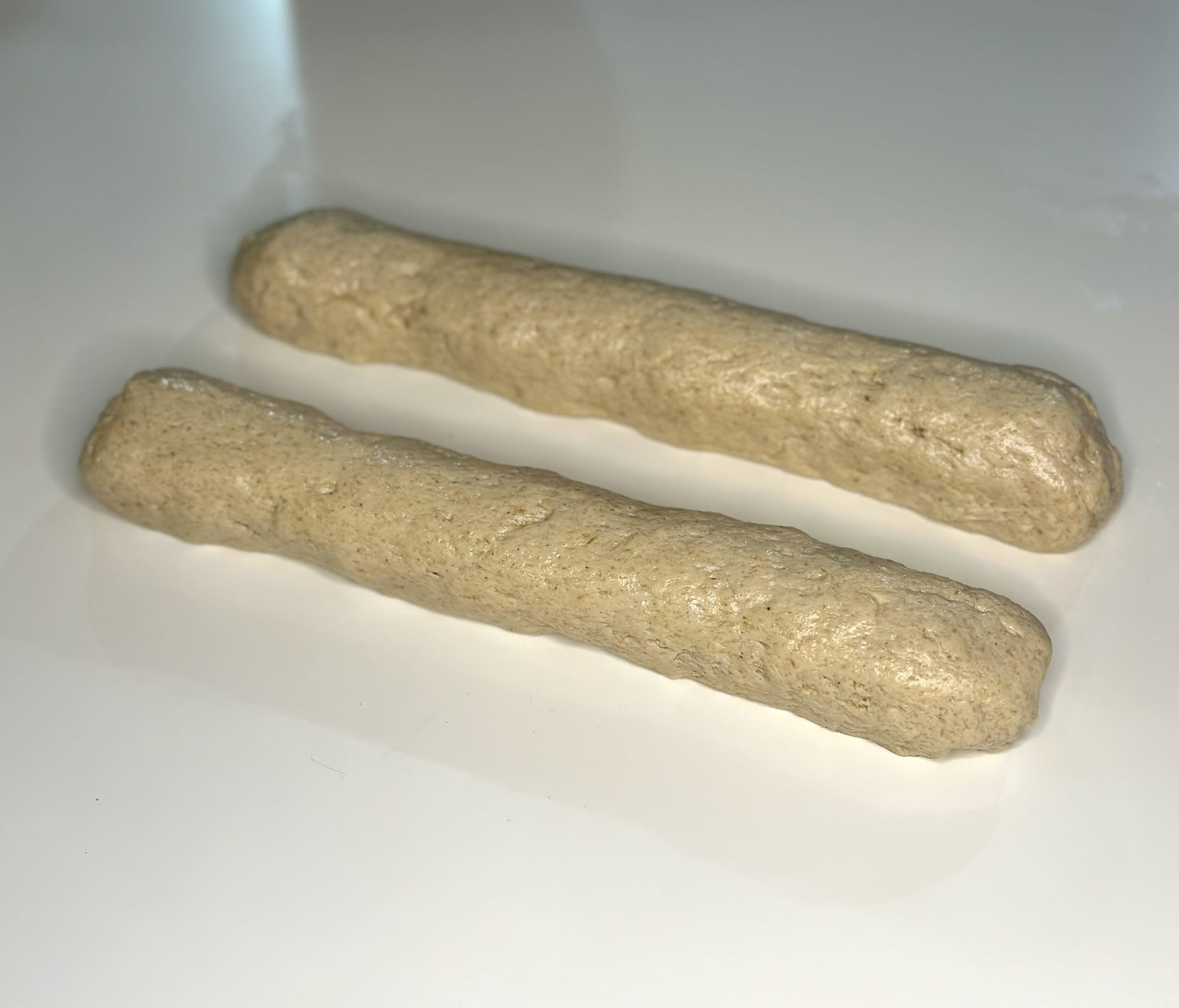
15. Start to form these balls into elongated sausages with slightly tapered ends. I do this by rolling them on a clean, flat surface, using both hands together. You can make these as thin or as thick as you like, though you may have to adjust the cooking time to ensure they are baked through.
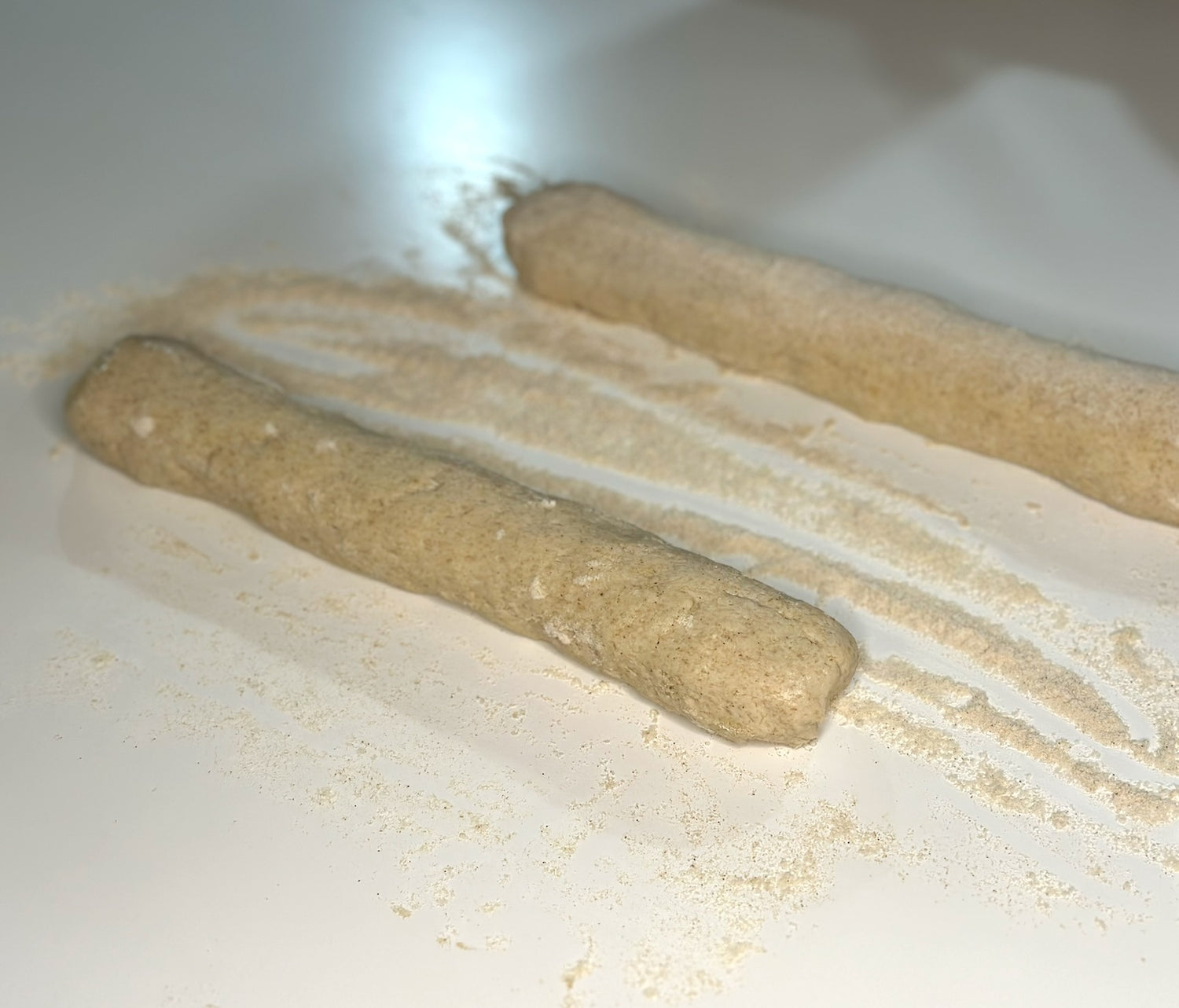
16. Roll the baguettes through a dusting of Sorghum Flour and then leave to rise on the work surface, covered by cling film, for 30 minutes.

17. Using a sharp knife, score 3 diagonal lines across the width of the baguettes, before re-covering and leaving them to rise for a further 30 minutes.
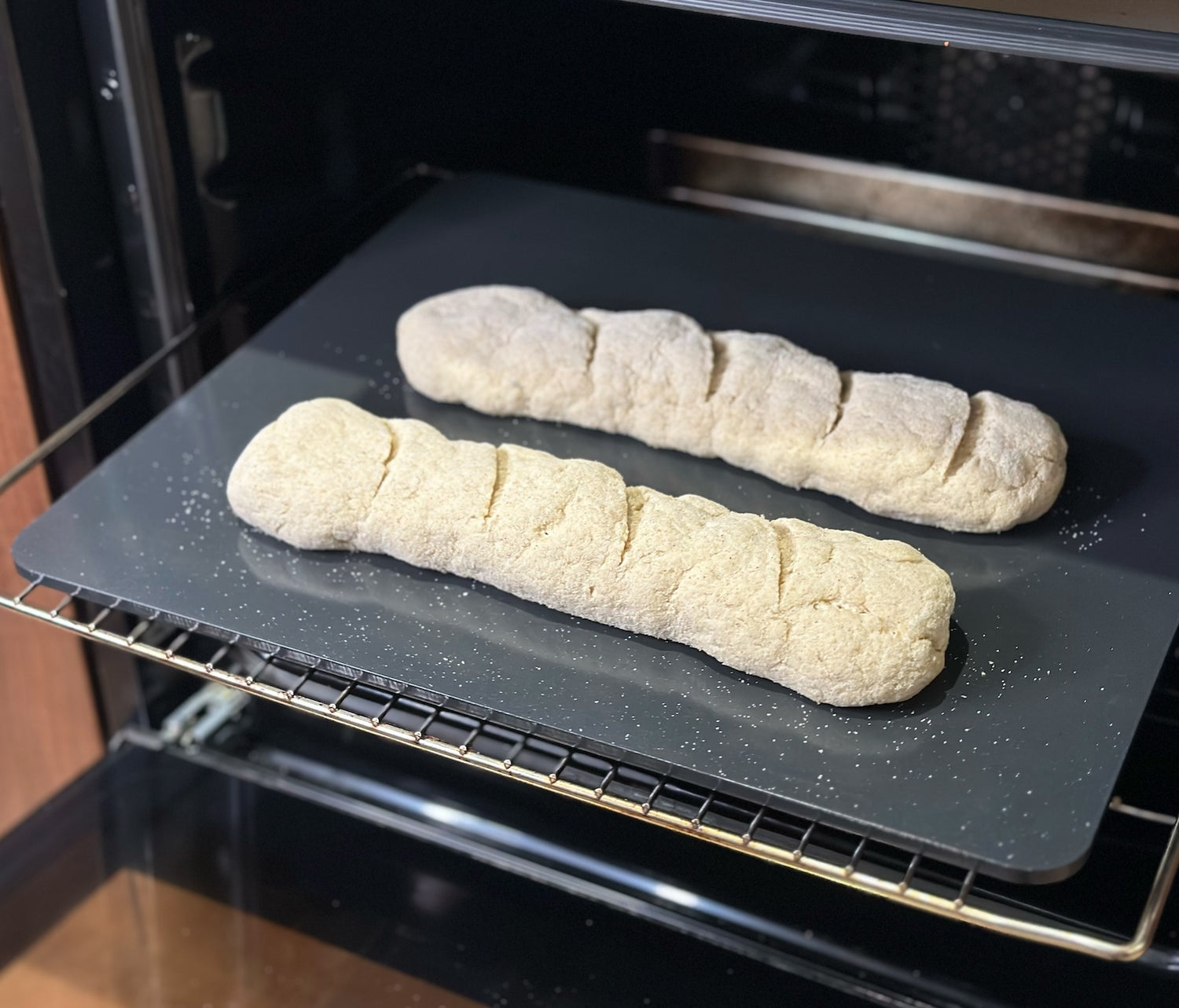
18. The oven should be preheated with the Crust King Baking Steel inside for 30 minutes at 220°C. 5 minutes before adding the baguettes to the oven, boil a small amount of water (Around 200ml) and add it to a dish or tray at the bottom of the oven. This creates a steamy environment which helps the crust to develop. Place the baguettes on the Crust King Baking Steel and bake for 20 minutes. After this time, remove the dish containing the water from the oven, and reduce the temperature to 190°C, and bake for a further 25 minutes.
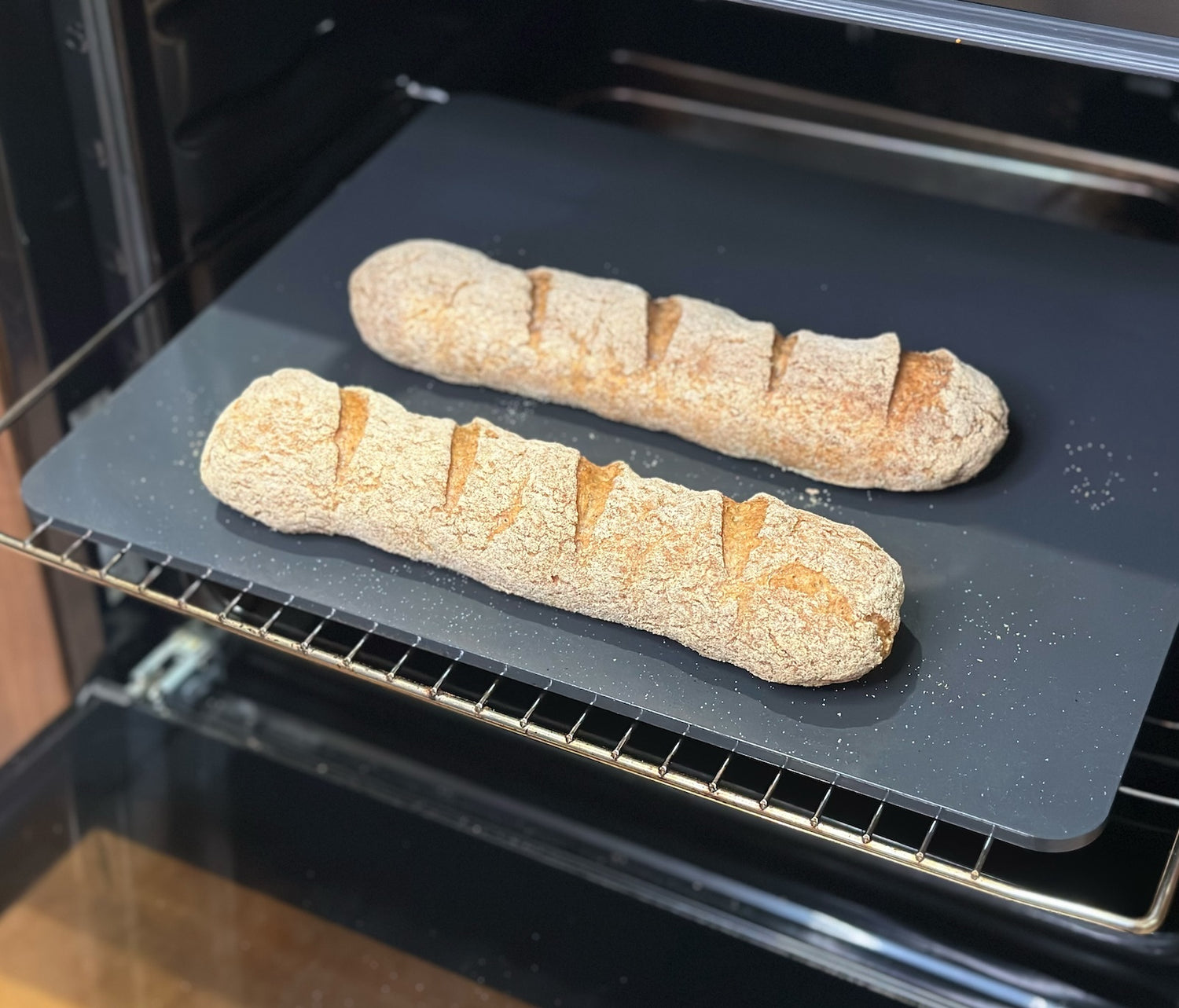
19. Remove from the oven onto a cooling rack and allow to cool until just slightly warm to the touch. Cutting into them too soon will result in the interior texture being mushy and undercooked.
If you want to turn them into garlic bread, slice them in half before adding garlic butter, and putting back into the oven to melt.
